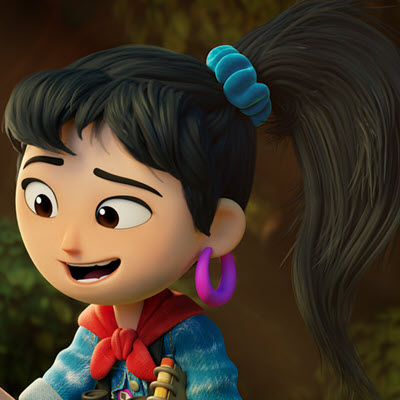The art of problem-solving in maths
Discover how maths and creativity go hand in hand.
Do you think of your maths and creative electives as total opposites? Perhaps it's time to think again. Gone are the days when we identify as either analytical or arty. Now we acknowledge maths skills as underpinning a lengthy list of creative jobs.
In fact, in a competitive workplace, employees fluent in both creative and mathematical subjects are exciting and in demand.




Problem-solving in maths vs. problem-solving in art
So, what kind of careers would call for both humanities and maths subjects? Too many to list here. Making mathematical breakthroughs requires thinking outside of the box, so, for a start, astrophysicists, meteorologists, game designers, cybersecurity experts and animators all benefit from honing both their creative and analytical sides.
Let’s hash out the creativity behind problem-solving and discover why both overlap more than you’d think.
1. Art and maths both require creative thinking
Both art and maths skill sets require imagination to resolve complex problems. Can you ignore the obvious and look for a point of difference rather than following traditional patterns?
Maths in school might feel like memorising lots of formulas, but having built that foundation, taking it to the next level requires serious creativity. Concepts such as recognising patterns, symmetry, positive and negative space and sequence all utilise the creative parts of our brains and are integral to design practices and making art.
Even jobs in finance or accounting require employees to think up creative solutions to complex sums, using mathematical modelling and complex data analysis.
Creativity plus innovation will always equal career success, no matter how numbers-based the occupation.
2. Arts and maths both open the door to loads of different careers
Into art and sport? Maths and fashion? Or creative writing and saving the planet? The unique, transferable skill set behind secondary-school-level maths and art is transferable to so many different jobs. You can pair your numbers smarts with any creative hobby and find a compatible study pathway.
A pattern maker working in fashion, for instance, would need to be fluent in geometry – tessellations, patterns, dimensions and spatial formulas. Same goes for a DJ creating a new dance mix. At the core of melodic patterns, structure and beat is maths – with specific frequencies completely controlling the direction of a track or gig.
No matter how unlikely the pairing, chances are there is a career out there that fuses maths and art with that thing you’re into.
3. They both offer attractive skill sets to employers
As the future of work becomes more automated and flexible the demand for adaptable skills across a range of areas is increasing . Studies show that those who present themselves as agile and transferable – such as a data science major with creative skills and a passion for design – will open themselves up to twice the number of opportunities.
In Australia, the most in-demand occupations require science, tech, engineering and maths skills with these STEM jobs growing almost twice as fast as any other industry. So getting clued up about STEM – even if you’re creative – is a seriously smart career move.
Reflect on your skill set and find out which areas you might need to get focus on in order to land your dream job. Chatting to your school’s careers advisor is a great place to start.
4. They both teach problem-solving smarts
Maths and art are similar in the way that they encourage us to think outside of the box when tackling a complex problem. From journalists to lawyers to politicians, maths is essential to interrogating and interpreting meaningful data in order to communicate complex ideas.
Plus, according to the University of Sydney, maths graduates who are in tune with their creative side have been shown to better develop unique research methods, test hypotheses, interpret data and engage in debate.
5. They can both be really fun and rewarding
So the maths geek stereotype is really a thing of the past. Being into numbers can land you a cool, satisfying job – even something traditionally reserved for ‘creatives’. Careers like animation, UX design, fashion design, gaming and app development all require equal parts maths and creative skills.
And don’t go past areas like data science, finance and business management. There’s an art to translating masses of data and information and there are whole departments dedicated to creating beautifully clean diagrams and visuals.